Book-Based Movie Adaptations
I like to read classical books and then watch the various film adaptations that have been produced based on those works to see how they compare. This list is mainly to track what I consider to be worthwhile adaptations and perhaps a helpful guide for those looking to experience these stories without having to read the literary works upon which they are based.
I try to list only direct adaptions of the books and avoid listing sequels, re-imaginings, and parodies unless they standout in some way.
Alice's Adventures in Wonderland

Alice in Wonderland (1933) features a number of notable actors for the time and is what inspired Walt Disney to make his animated version of the classic novel. Puppets and humans in costumes were used to being the wacky cast of characters to life. These costumes have become infamous for their unintentionally creepy appearances.Worth a watch for the nightmare-inducing mock turtle and Humpty Dumpty. It does contain some light animal abuse which was typical for the era.

Alice in Wonderland (1951) is a mixture of the first book and its sequel. This animated film isn't one of Disney's stronger works. It's colorful and charming enough for children, and stresses the dreamlike nonsensicalness of the world. The cartoon characters can more easily express the unnatural nature of Wonderland than the live action adaptations that came before it. With no real plot to follow, children with short attention spans can also walk away and come back to it whenever they want without missing anything.

Alice's Adventures in Wonderland (1972) is a mixture of the first book and its sequel. It adds in musical scores and uses humans in costumes or with partial masks. As far as the live-action versions go, this one has a lot of rustic charm and whimsy to it. Where Disney's version can be a bit harsh on the eyes and meandering at times (as the story in the book was), this version is somehow more pleasant to watch. Many consider it to be the most faithful adaptation of the book.
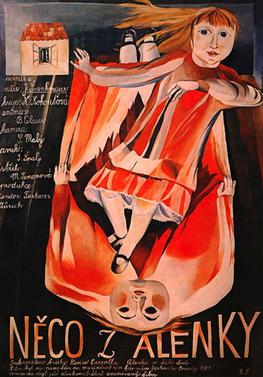
Something from Alice / Alice (1988) is a dark re-imagining of the classic story. It's grimy and unsettling in the best ways. Within just the first 20 minutes a taxidermy white rabbit tears himself off of his display and pulls a pocket-watch from within his sawdust filled body. Alice touches mystery substances in specimen jars bare-handed and transforms into a creepy doll. Real taxidermy animals and animal bones were used.
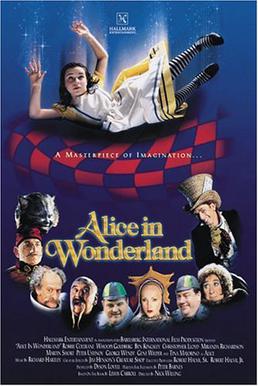
Alice in Wonderland (1999) is a made for TV movie that combines the first book with elements from the sequel. Of the live-action adaptations produced this one is by far the most whimsical and the one that best captures the spirit of the book's world. The actors, puppets, CGI, songs and cinematography are all very well done, and earned the film a number of awards. This is also one of the few adaptations to include the Mock Turtle Soup and the Lobster Quadrille.
Arthurian Legend
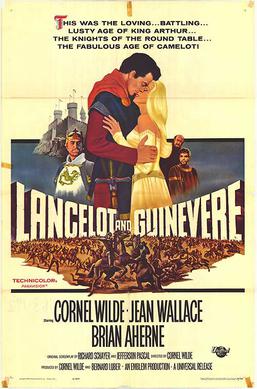
Sword of Lancelot / Lancelot and Guinevere (1963) focuses on the main love triangle between the king, his wife, and his closest companion; leaving out the half-giant Galehaut and princess Elaine of Corbenic who constituted a love-polygon. In this adaptation the young Guinevere only marries the much older and slightly sexist King Arthur as part of an arranged marriage. Her heart though, yearns for the charismatic Frenchman, Sir Lancelot. It is vibrant with some gorgeous location shots that give it a medieval fairy-tale feeling. Some scenes can drag on for far too long, but it is one of the few film versions to take a more positive outlook on the legendary affair that toppled a kingdom.

Monty Python and the Holy Grail (1975) is a comedic parody of King Arthur's quest for the Holy Grail. It is an adventure that includes encounters with the Knights Who Say Ni!, a Bridge of Death, sassy Frenchmen, killer rabbits, and lonely lustful nuns. Despite years of repetition, re-runs, and meme's, the familiarity hasn't ruined its enjoyment. Anyone who gets to watch this for the first time is in for a treat.

Excalibur (1981) is an epic loosely based on Le Morte d'Arthur, which tells the story of King Arthur, from his birth to the founding and fall of Camelot and the Knights of the Round Table. Its dreamlike visuals manage to coexist with a narratively intriguing, dark and gritty retelling of the classic story. It features an awkward blend of seriousness and absurdity that gives it an atmosphere of something just not quite being right. It is a meditation on the enduring nature of myth and the darkness of mankind rather than a glamorous story of virtuous knights. Full of emotion, but dated by today's standards in the best and worst ways.
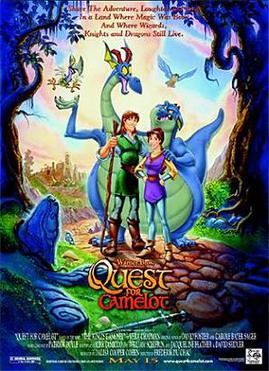
Quest for Camelot / The Magic Sword: Quest for Camelot (1998) is an entirely original animated film based in Arthurian lore. It follows Kayley - the daughter of Sir Lionel, a Knight of the Round Table - and her blind companion Garrett, who attempt to return the sword Excalibur to King Arthur after it was stolen by a usurper. It is a charming family friendly film with a very modern take on the setting whose stories were primarily written during an era that was not terribly kind to ladies or the physically impaired. Quest for Camelot is most notable for being one of the higher quality adaptations aimed at a young audience, and for its excellent portrayal of a disabled protagonist.

The Green Knight (2021) is a slow paced, high-art movie that retains the atmosphere and strangeness of the original work - Sir Gawain and the Green Knight- while still doing its own thing. It uses a lot of sub-context, metaphorical meaning and symbolism, such as its use of crossroads and even the color green, so having a good grasp of that kind of thing will make for a better viewing experience. Otherwise this movie will just come off as a shallow, long, pointless road trip. Very unique and definitely not for everyone.
Carmilla

Terror in the Crypt / Crypt of the Vampire / Carmilla (1964) is a plodding adaptation that is by no means a great film, but still watchable. The script was written within 24 hours or over the course of 3 days (depending on who you ask) and is only superficially faithful to the book. It retains the lesbian implications of the original story while taking a lot of liberties, such as adding in a beggar character, changing names, adding in a family curse, and a witch hunt/summoning. There are a number of changes that either don't make sense or that don't seem go anywhere, possibly due to the number of edits, cuts, and re-releases the film has gone through over the years.

The Vampire Lovers (1970) recounts the story of Carmilla, a vampire who seduces young girls in the mansions of prominent men, leaving behind lifeless husks and dismayed fathers. It touches on all the major elements of the book while still putting its own spin on things. There is a bit of gore, nudity, and the lesbian overtones that the work is known for are very prominent in this version. It is competently made but far from thrilling, as it chooses to lean more into the erotic side of things rather than the horror.
Don Quixote
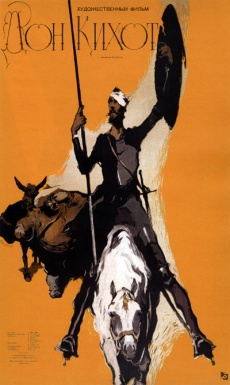
Don Quixote (1957) is probably the most definitive adaptation that has been produced. Due to the length of the book, the movie had to summarize some events, rearrange the sequence of others, and leave some parts out entirely, but all the important stuff ultimately makes it in. And where most adaptations make Quixote out to be someone heroic, this one preserves the funny-sad tone of the book's Quixote - a man who fancies himself a knight, but is really just a delusional elderly man that does more harm than good with his antics. Quixote's honest and loyal nature however, make him an easy person to root for, especially when contrasted with the ugly reality around him and "sane" nobles who are even more out of touch with reality than he is.

Don Quixote (2000) is a made for TV movie that portrays Quixote more as an old dreamer longing for a bygone era rather than the destructive madman obsessed with knightly duties that he was in the book. CGI is used extensively to bring Quixote's fantasies to life instead of leaving them to the viewer's imagination, which lends them a degree of tangibility. The end result is something that feels much more upbeat and silly-fun rather than funny and sad. It makes for a decent family film with a few laughs; my favorite being the disguised 'fair lady' bit.

The True Don Quixote (2019) re-imagines the classic story in modern times: Rocinante is a bike instead of a horse and the windmills have been replaced by oil-pumps. It uses the premise to address current social issues and helps to contextualize the kind of story the author of the original classic was trying to tell in his own time. The brand of humor wont be to everyone's liking and I don't think
this adaptation can necessarily stand on its own without
the viewer already having some familiarity with the original story of
Don Quixote.
Dracula

Dracula (1931) is the very first adaptation with sound and the one credited with establishing the character as a cultural icon. It is worth watching for its role in cinema history, but can be very slow paced and plodding. Most of the scenes are static with the occasional odd edit or cut and some of the lines of dialogue come off as stilted. A Spanish version of the movie was shot in the same year, using the same sets with different actors and is generally regarded as the better version.

Horror of Dracula / Dracula (1958) is the first in a series of films starring Christopher Lee as Count Dracula, who is credited with creating the popular image of Dracula as a fanged, red-eyed, and sensual person. His portrayal of Dracula as quietly menacing near the beginning and feral near the end was a take on the character that hadn't been seen before at that point in time. It's also an adaptation that isn't afraid to slow down in order to build atmosphere or to explore a scene.

Dan Curtis' Dracula / Bram Stoker's Dracula / Dracula (1974) is one of the shorter and less faithful adaptations. The biggest change was giving Dracula an ex-wife and having him go on a search for a new, similar-looking wife. Not much time is given to building suspense or developing the characters, and some plot threads, such as Mina turning into a vampire, are left unresolved. The costume designs are great and the first couple of minutes have a good degree of ambience, such as the unnatural number of dogs following Dracula's carriage.

Count Dracula (1977) is a nearly 3 hour long movie that has occasionally been broken up into 3 parts for airing on television. It is possibly the most faithful adaptation of the book that has been produced, and one of the least thrilling, although none are a 1-for-1 recreation. The characters Quincey Morris and Arthur Holmwood have been fused together into a single character, and Lucy and Mina are sisters in this version - all pointless changes that don't impact the narrative much, if at all.

Dracula (1979) is based on both the novel and a 1924 stage play of it. The movie opens with the crash of the Demeter and leans more heavily into the romance compared to the other versions which focus more on the horror aspects. Some attempt at historical accuracy was made, and the sets and acting are acceptable. It is worth noting that most video copies and streaming services use a de-saturated version of the film; the original theatrical version had more color to it.

Bram Stoker's Dracula (1992) is widely considered to be the most entertaining adaptation and the only one to kill Dracula in the manner described in the book - decapitation and a knife through the heart. It remains fairly faithful to the book but tends to go off on creative tangents, such as connecting Dracula to Vlad the Impaler, adding in a romance between Dracula and Mina, a romance between Mina and Van Helsing, and having Dracula bang Lucy while in wolf-man form; there is so much weird sex stuff in this one. It's silly, theatrical, and has a strong style all its own.

Dracula (2006) puts a unique twist on the familiar narrative by giving Arthur Holmwood syphilis. In his search for a cure he contacts an occult group that claims to know a guy (Dracula). The group sacrifices Jonathan Harker to Count Dracula under the guise of selling him property on Arthur's behalf and the story more or less plays out the same from there. There are additional changes, such as Van Helsing being kept captive by the cult and Dracula surviving the final assault on his life, but it offers a fresh take on a well trodden narrative. I also really like that they portray Dracula as a psychopath rather than an animalistic monster or a misunderstood man.
Frankenstein; or, The Modern Prometheus
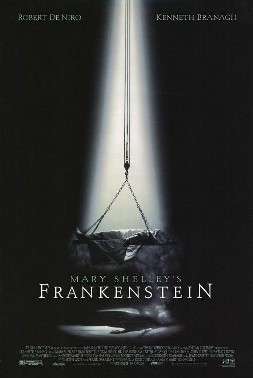
Mary Shelley's Frankenstein (1994) is an ambitious and opulent adaptation that streamlines the book's narrative, sometimes to its detriment. It's loud and lacks subtlety but some movie goers seem to like the flashy, overly dramatic acting. Among the changes made, the biggest was giving the monster a bride and downplaying Frankenstein's darker side. Many of the horror elements and emotional scenes lack the proper impact due to the over the top musical score and odd editing choices.

From the Earth to the Moon
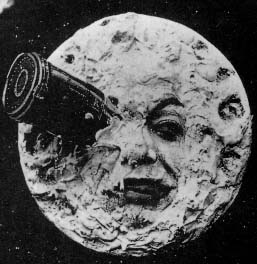
A Trip to the Moon (1902) is a silent film/short inspired by the book that has at least one hand-colored print known to exist. It has a lot of charm from the early days of cinema with beautiful cardboard backgrounds, lots of whimsy, and a sense of discovery. The capsule landing in the moon's eye has gone on to become an iconic image from cinema history and is worth watching for that alone.

From the Earth to the Moon (1958) is the only direct adaptation that has been made. It can be very slow moving and makes a number of alterations, such as changing Impey's name to "Victor", the type of craft built, the fate of said craft, what characters end up in the craft and the reasons behind their decision to board a craft never intended for living passengers. The book's plot is completely abandoned about halfway in; likley the result of bankruptcy rather than part of some artistic vision. It is not good by any stretch.
The Hunchback of Notre Dame
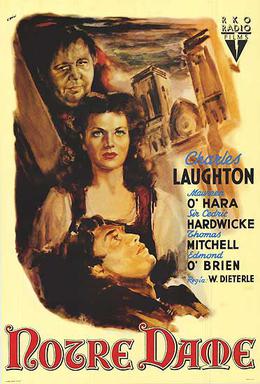
The Hunchback of Notre Dame (1939) has really great cosmetics and set dressing for the era. Quasimodo's character is a standout in no small part because of Charles Laughton's stellar performance. He comes off as so much more likeable and sympathetic than the one in the book. He barely utters a word, but his body language speaks volumes. The main differences in this story over the book is that Phoebus does not survive the attempt on his life and Esmeralda is pardoned from hanging. She goes on to marry Gringoire while Quasimodo, successful in saving her life, watches silently amongst the cathedral's gargoyles. The ending is poetically tragic, to the point that I vastly prefer it to the one in the book.

The Hunchback of Notre Dame (1956) features a normal-looking Quasimodo who is not a hunchback and only slightly misshapen of face. He takes a back seat to Esmeralda who is the star of this production. It is one of the less remarkable adaptations that is notable for being the first in color and for staying very faithful to the source material, including being one of the few to use the book's original ending in which everyone dies.

The Hunchback of Notre Dame (1996) is an animated film by Disney that
stays relatively true to the original story, including its darker tones, among which are infanticide, lust, and antiziganism. Some changes were made to keep it 'kid friendly', such as giving it a happy ending, making Phoebus more of a heroic figure, and changing Claude Frollo into a judge to avoid upsetting religious sensibilities. It is visually and musically the most stunning of the adaptations; see "Hellfire" as an example. Despite being a kids film it seems to be more popular with adults, as many who saw it as children say they struggled to fully grasp its themes and only really came to appreciate it with age.
Ivanhoe

Ivanhoe (1982) replicates the book almost exactly, sometimes even line for line. It is a colorful, lively rendition with impressive location shots, jousts, battles, and acting. The darker political conflicts and prejudices from the book also remain intact. It is a very entertaining watch that airs on TV every Christmas and New Years in some countries.
Journey to the Center of the Earth

Journey to the Center of the Earth (1959) takes liberties with the story, such as adding in an unnecessary villain and a pet duck named Gertrude, but still manages to be entertaining. It's silly and imaginative but palatable enough for adults and retains the sense of exploration and discovery that made the book so endearing. Real lizards with prosthetics were used to represent the prehistoric creatures, which may have been harmed during filming as this was shot during an era when animal welfare wasn't taken into account.

(The Fabulous) Journey to the Center of the Earth / Where Time Began (1977) is a charming, colorful adaptation that I find rather soothing to watch. The acting is decent enough, but unintentionally humorous at times. They also make a number of changes to the narrative, such as adding in an annoying love interest and an encounter with a giant ape. There is a lot of low-budget charm to this one, especially in the costumes and props used for the ancient wildlife.

Journey to the Center of the Earth / Journey 3D (2008) is a re-imagining of the book set in modern times. As a family-oriented flick, it contains some light humor and really tries to capture the whimsy and wonder of discovering the impossible. There are fictional animals such as Cyanis Rosopteryx added in and the more fantastical elements from the book are emphasized and embellished.This version also focuses heavily on human connection and family bonding, which gives it a different feel and identity compared to the other adaptations.
Moby Dick; or, The Whale

Moby Dick (1956) is the closest to a definitive adaptation that exists, although none come close to capturing the biblical allusions and deeper philosophical themes of the book's plot. This version is very Ahab-centric, leaving out the character Fedallah, who specifically reflects on Ahab's fate and sanity, and downplays the cabin-boy Pip who "sees the world as it is" and plays an important role in the racial divisions on the ship. The props and set dressing are also very good for the era; not always the most convincing, but I have seen worse from more modern releases. A small amount of real whaling footage was used.

Moby Dick (1998) is a mini-series consisting of 2 episodes with a combined runtime of 3 hours. It has the scale and grandeur of an epic made on a for-TV budget. It falls into the common pitfall of leaving out the philosophical bits from the novel, so that only the shallowest reading of the story is adapted to the screen - that of an angry man seeking vengeance on an animal. It is competently made and there are moments where it shines, but the acting can be a bit muted at times. This is the only version where Queequeg is explicitly Maori.

Moby Dick (1999) is a paint-on-glass animated short that covers the gist of the main plot and includes most of the major characters. It is notable for being a very rare form of animation with a gorgeous, dark and uncanny feel to its art style, and for being one of the few adaptations to portray the white leviathan as it was in the book - as a symbol of God, nihilism, and an uncaring force of nature that both literally and metaphorically drags Ahab down into a dark abyss. My personal favorite of the adaptations - give it a watch.
The Old Man and the Sea

The Old Man and the Sea (1958) is a live action film that uses footage of the world record catch set by Alfred C. Glassell Jr. in Peru. The movie was one of the first to use a bluescreen and has some solid acting. It is a slow burn though, and has a cobbled together look because scenes were not shot on location. Film from various scources also had to be sliced together because there was not much good fishing footage available at the time of production. It is still a faithful and heartfelt adaption.

The Old Man and the Sea (1999) is a masterful paint-on-glass animated short created for IMAX. It is a very rare form of animation that everyone should watch at least once, even if they don't care for the story, which is that of an elderly fisherman trying to catch a marlin. Each frame of this animated piece was painstakingly hand-painted by one man and his son over two and a half years. Any one of the single frames would look lovely on their own; worthy to hang in a museum. Pure artistry.
The Picture of Dorian Gray

The Picture of Dorian Gray (1976) was a single episode in a television anthology called 'Play of the Month'. The pacing and visuals aren't the best, but it adapts the book almost word-for-word. The central metaphors and themes remain intact, such as those surrounding performative gender roles, superficiality and moral hypocrisy, as well as humanity bringing doom upon itself. This is the only version to accurately portray Dorian as a petulant brat and to include the correct amount of queer subtext found in the book.
Strange Case of Dr. Jekyll and Mr. Hyde

Dr. Jekyll and Mr. Hyde (1931) is perverse with a shocking amount of abuse (physical and psychological), rape, and murder. These are used in service to the book's themes, which include substance abuse and the social hypocrisy of the Victorian era. Like many from that time, Jekyll presents himself as a respectable gentleman, but it doesn't take much for Hyde to come out. The film portrays Hyde as a hairy, fanged man to visually communicate his bestial nature - one that targets vulnerable women like Ivy. Upon swapping back to Jekyll his first instinct is to pay Ivy off. Class resentment and division also plays a major role, such as with Ivy who wants protection - not money, but doesn't go to the authorities for help because she knows they see her as lowly and beneath their help.
The Time Machine

H.G. Wells' The Time Machine (1960) is the only adaptation that does not deviate greatly from the book. It drags a bit in the second half and still does its own thing, but stays relatively close to what the book was about. The sets and especially the time machine itself are beautifully made. It is notable for being a very early (possibly the first?) movie about time travel that sparked the imagination of a generation.




Comments
Post a Comment